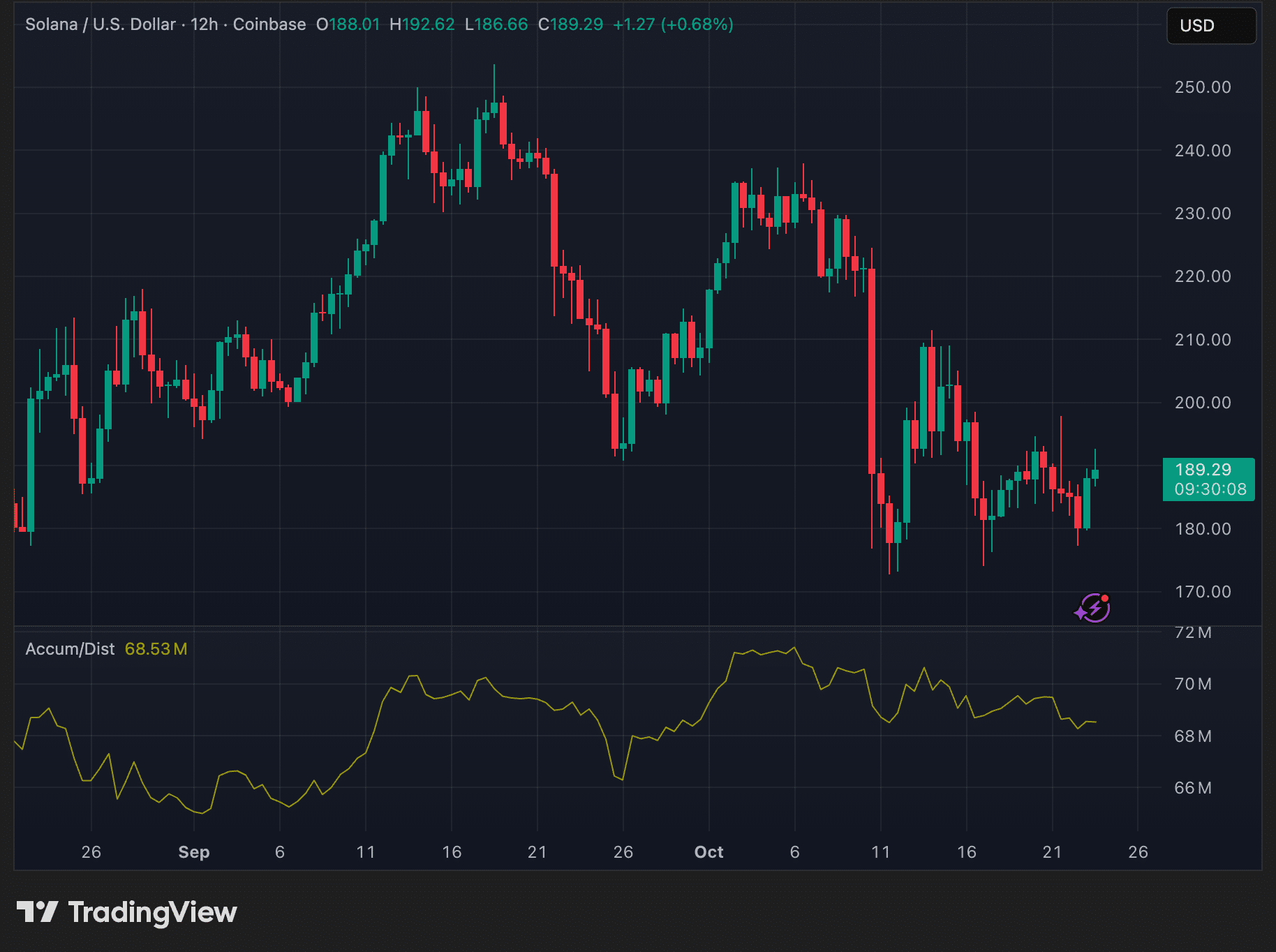Fidelity’s addition of Solana to its U.S. brokerage platform on October 23 provides regulated direct access to SOL for investors, alongside Bitcoin and Ethereum, boosting institutional adoption. This follows Hong Kong’s approval of the first Solana spot ETF, signaling global momentum for the asset.
-
Fidelity’s move offers U.S. clients seamless SOL exposure through a trusted $5.8 trillion asset manager.
-
Hong Kong’s Securities and Futures Commission approved ChinaAMC’s Solana ETF, set to trade on October 27, advancing Asia’s crypto innovation.
-
SOL price rose 1% to $189, with potential to test $200 amid ETF optimism and steady accumulation signals.
Discover how Fidelity’s Solana listing and Hong Kong’s ETF approval drive SOL’s institutional growth. Explore impacts on price and adoption—stay ahead in crypto investments today.
What is Fidelity’s Solana Listing?
Fidelity’s Solana listing represents a pivotal advancement in cryptocurrency accessibility for mainstream investors. On October 23, the asset management firm with over $5.8 trillion in assets under management integrated SOL into its U.S. brokerage platform, enabling direct purchases alongside established assets like Bitcoin and Ethereum. This development underscores Solana’s rising status as a viable alternative layer-1 blockchain, fostering greater institutional confidence without the need for external exchanges.
How Does Hong Kong’s Solana ETF Approval Impact Global Markets?
Hong Kong’s approval of the first spot Solana ETF by ChinaAMC, announced by the Securities and Futures Commission, marks a landmark for Asian financial innovation. The product is scheduled to begin trading on October 27, offering investors a regulated vehicle for SOL exposure and potentially attracting billions in inflows. According to regulatory filings, this ETF will track Solana’s spot price, providing a bridge between traditional finance and blockchain technology. Experts note that such approvals could pressure other regions to accelerate similar products, with data from market trackers indicating a 15% surge in Solana-related search volumes following the news. This move not only diversifies Hong Kong’s crypto offerings but also highlights the region’s proactive stance amid U.S. regulatory delays, positioning it as a hub for digital asset investment.
Frequently Asked Questions
What does Fidelity’s addition of Solana mean for U.S. investors?
Fidelity’s Solana listing allows U.S. brokerage customers to buy and hold SOL directly within the platform, similar to BTC and ETH. This regulated access simplifies entry for retail and institutional investors, reducing reliance on unregulated exchanges and enhancing portfolio diversification with Solana’s high-throughput blockchain features.
Will Hong Kong’s Solana ETF influence U.S. regulatory decisions?
Hong Kong’s approval of a spot Solana ETF demonstrates successful integration of crypto into traditional markets, which could inspire U.S. regulators. With applications from firms like VanEck pending, resumption of SEC reviews post-government shutdown may fast-track similar products, benefiting global Solana adoption through competitive innovation.
Solana’s Price Performance Amid Institutional News
Solana’s price has shown resilience following these developments. As of the latest data, SOL traded at $189, reflecting a nearly 1% increase over the previous 24 hours. The token has been consolidating within a $185 to $195 range, recovering from recent weekly lows influenced by broader market corrections. Technical indicators, including the Accumulation/Distribution line, point to consistent buying interest, even as volatility persists in the crypto sector.


Source: TradingView
If institutional enthusiasm sustains, analysts suggest SOL may challenge the $200 resistance level, a threshold previously tested amid positive sentiment before external market pressures intervened. Solana’s network metrics further support this outlook, with transaction volumes averaging over 1,500 per second and total value locked exceeding $4 billion, according to on-chain data from Dune Analytics.
Regulatory Landscape and U.S. Delays
While Fidelity’s integration and Hong Kong’s ETF launch propel Solana forward, the U.S. regulatory environment presents hurdles. The ongoing government shutdown has halted Securities and Exchange Commission operations, stalling reviews for spot Solana ETF proposals from issuers such as VanEck and Franklin Templeton. These filings, submitted earlier in the year, seek to mirror the structure of approved Bitcoin and Ethereum ETFs, providing direct SOL exposure without futures contracts.
Industry observers, including those from Bloomberg Intelligence, anticipate a swift resumption of evaluations once federal operations resume. Historical precedents, like the rapid approval of Ethereum ETFs following Bitcoin’s success, indicate that Solana could follow suit if market conditions align. The SEC’s pause affects not only ETFs but also broader crypto classifications, yet it has not dampened international progress. Hong Kong’s SFC, known for its balanced approach, has already approved multiple crypto products, drawing comparisons to Singapore’s progressive framework.
Institutional Adoption Trends for Solana
Solana’s trajectory reflects broader trends in blockchain maturation. Launched in 2020, the network has evolved from a high-speed alternative to Ethereum into a ecosystem supporting decentralized finance, non-fungible tokens, and real-world applications. Fidelity’s decision aligns with increasing demand for layer-1 assets beyond BTC and ETH, as evidenced by a 25% year-to-date gain in SOL’s market capitalization, reaching approximately $88 billion.
Authoritative sources like the Cambridge Centre for Alternative Finance report that institutional crypto allocations have doubled since 2022, with Solana capturing a notable share due to its scalability—processing up to 65,000 transactions per second at peak. This efficiency has attracted developers and enterprises, including partnerships with payment processors and gaming platforms. As global regulations clarify, Solana’s position strengthens, potentially integrating with traditional finance rails more deeply.
Key Takeaways
- Fidelity’s Solana Integration: Provides U.S. investors with direct, regulated SOL access, enhancing mainstream adoption and portfolio options alongside BTC and ETH.
- Hong Kong ETF Milestone: The first spot Solana ETF approval positions Asia as a leader, with trading starting October 27 via ChinaAMC, likely spurring inflows.
- Price and Market Outlook: SOL at $189 shows bullish signals; monitor $200 resistance amid U.S. ETF delays post-shutdown for potential breakout.
Conclusion
Fidelity’s Solana listing and Hong Kong’s Solana ETF approval highlight the asset’s accelerating path to institutional legitimacy, bridging retail accessibility with sophisticated investment vehicles. As regulatory clarity emerges globally, particularly in the U.S. following the government shutdown, Solana stands poised for expanded growth. Investors should track these developments closely, as they could catalyze SOL’s next phase of market expansion and innovation in the crypto landscape.





